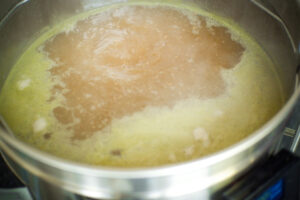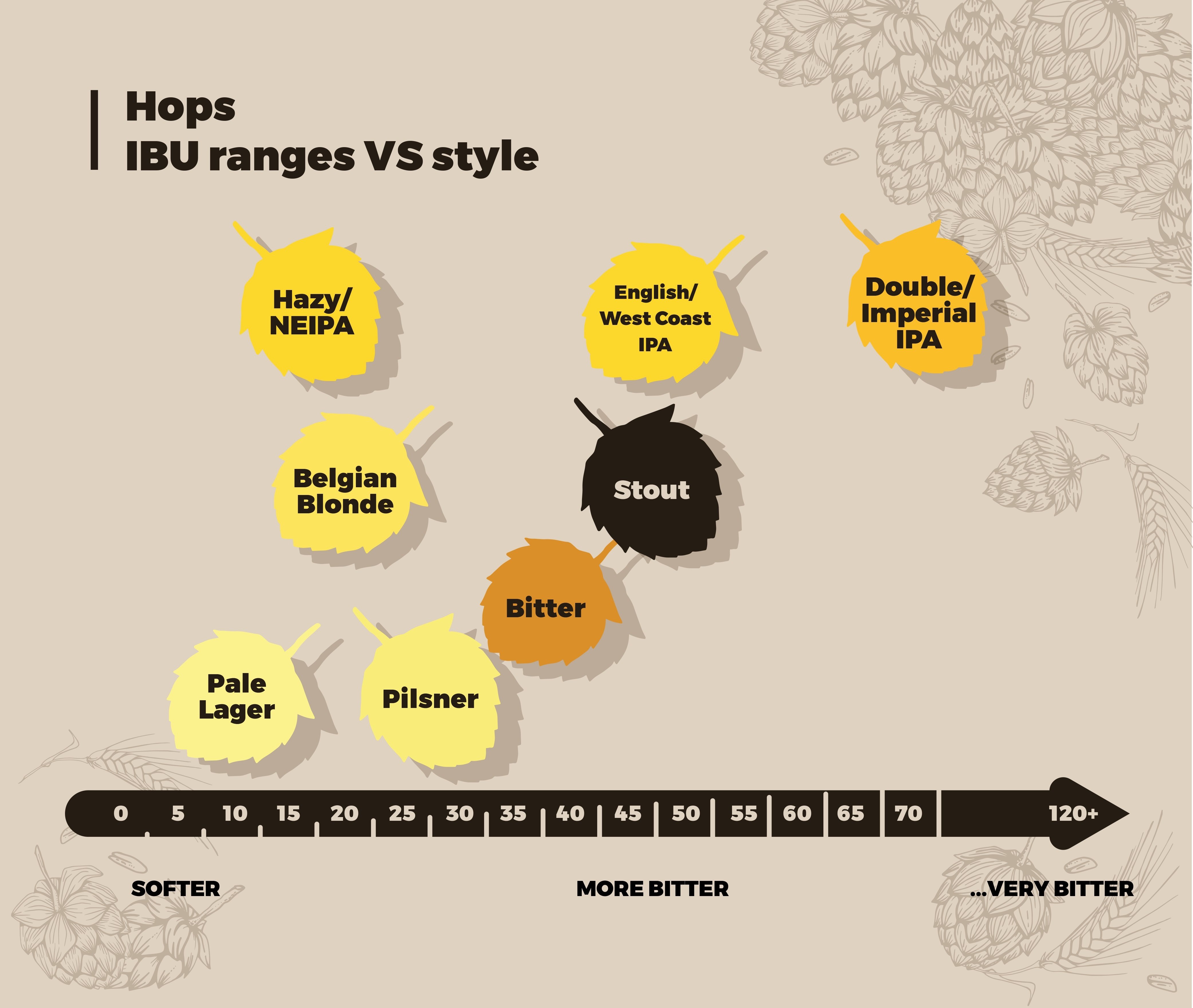Brew With Us ESSENTIALS – understanding bitterness

Mastering the bitterness
Hops are naturally bitter, which contrasts well with the sweetness of malt.
But if you taste a hop leaf or a bit of a pellet, you’ll find it’s tannic, astringent, and pretty unpleasant – a bit like eating a teabag!
So we need to do some work to get the right flavour from our hops…
The bitterness in hops comes mostly from chemicals called “alpha acids”. The percentage of alpha acids in a hop (AA%) indicates how strong the bitterness is. Higher AA% means you need to use less of that hop to get a particular level of bitterness.
Boiling

To change that “teabag” astringency into a pleasant bitterness, we can boil the hops – just like making tea! Heat makes the alpha acid chemicals change into a different form. This is called isomerisation. The longer you boil your hops for, more of the alpha acids are changed like this.
Isomerised alpha acids have a distinctive type of bitterness. Brewers measure the level of this bitterness using International Bittering Units (IBU), with a higher IBU indicating a more bitter beer. Beer recipes often target a specific IBU to help you hit the right level of bitterness in your beer.
Hops with higher AA% have inherently more potential for high IBUs, but you can also reach your IBU target by adjusting the amount of hops you add and how long you boil them. A small amount of hops boiled for a long time has a different taste of bitterness than lots of hops boiled less, even when the calculated IBU levels are the same.
To learn the difference in bittering flavours, let’s try a simple experiment! Here we’ll make a simple “hop tea”.
You need:
Two saucepans able to hold around 1.5L each
200g dried malt extract (DME)
4g hop pellets (any variety between 3-6 AA%)
Add 1L of warm water and 100g of DME to each pan and gently bring them to the boil. Watch out that they don’t boil over – malt extract goes crazy when it first hits boiling! Hold both pans at a gentle, rolling boil.
Add 1g of hop pellets to the first pan and begin a timer for 60 minutes. When the timer reads 10 minutes remaining, add the other 3g of hops to the second pan. Keep an eye on both pans and top up the water from a kettle if they begin boiling dry – keep both pans as close to the same level as you can.
At the end of the time, turn off the heat and leave the pans to cool. Then you can taste! Scoop a little from the top of each pan so you don’t get the hop particles that have sunk to the bottom, or pass through a tea strainer.
You should find a clear difference between the two pans: the longer boiled hops should have a sharp, clean bitterness, whereas the other pan should have a softer, more “fuzzy” bitterness.
There will be other differences in the flavours, specific to the variety of hops you used – explore for yourself!
Because the flavour and type of bitterness is different depending how long the hops are boiled for, most recipes include more than one hop addition – some boiled for a long time, and some boiled less – to balance the flavours and add complexity.
First wort hopping
You might see references to “FWH” in a recipe. This stands for “first wort hopping”, which means adding the hops to the wort before you start boiling. Many brewers believe this gives a smoother bitterness than adding at the start of the boil – somewhere between the cleanness of a long boil and the softer feel of a late addition. Why not try it yourself?
Aroma hops vs bittering hops
Some hops are more commonly used for long boils (bittering hops) and some towards the end of a boil (aroma hops), based upon how that variety performs in practice. Others hops are useful for both bittering and aroma, so these are categorised as “dual purpose”.
It usually follows that bittering hops have higher AA% than aroma hops, although you will find some exceptions! These categories are guidelines to help you quickly understand how a particular variety is typically used, not hard rules.
Hops from home and away
Next we begin our tour of the world’s hop regions, starting close to home.
From noble to hedge hops, you’ll get to know British and European varieties!




